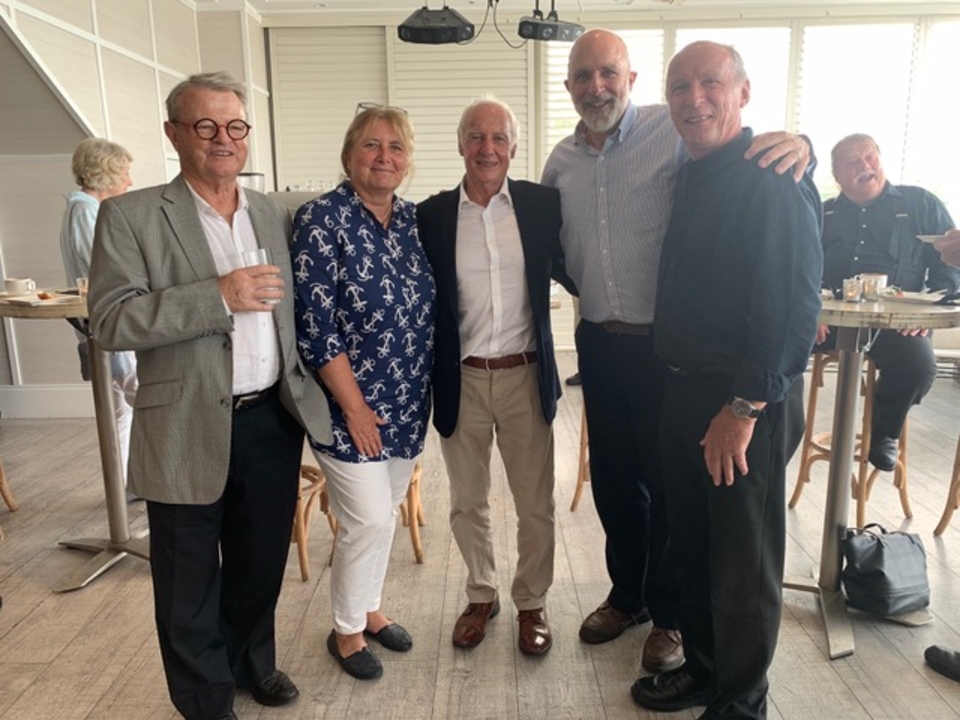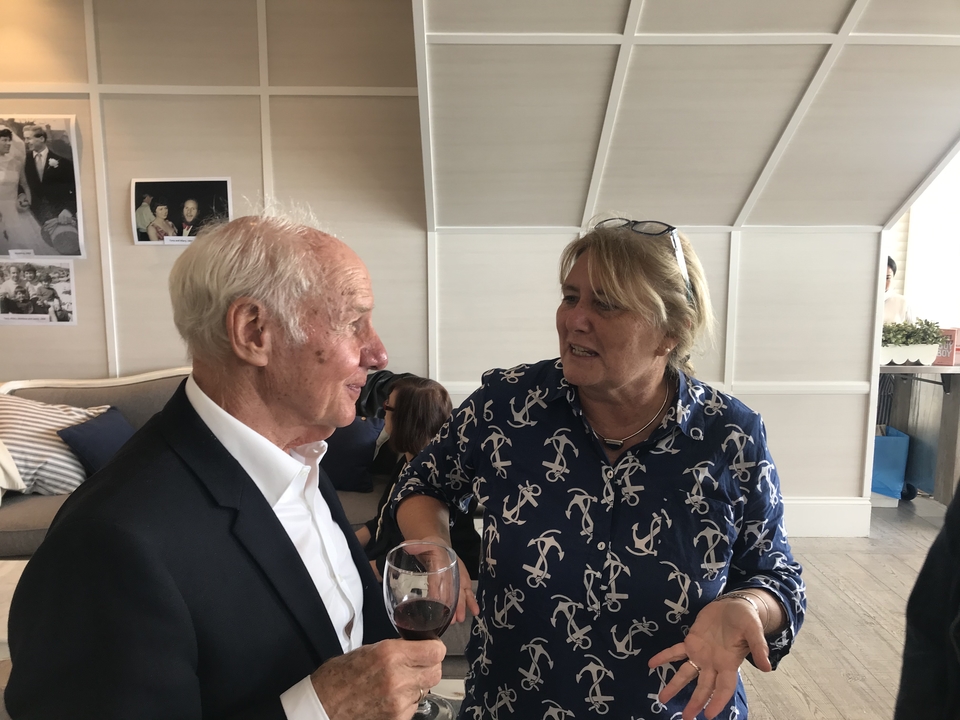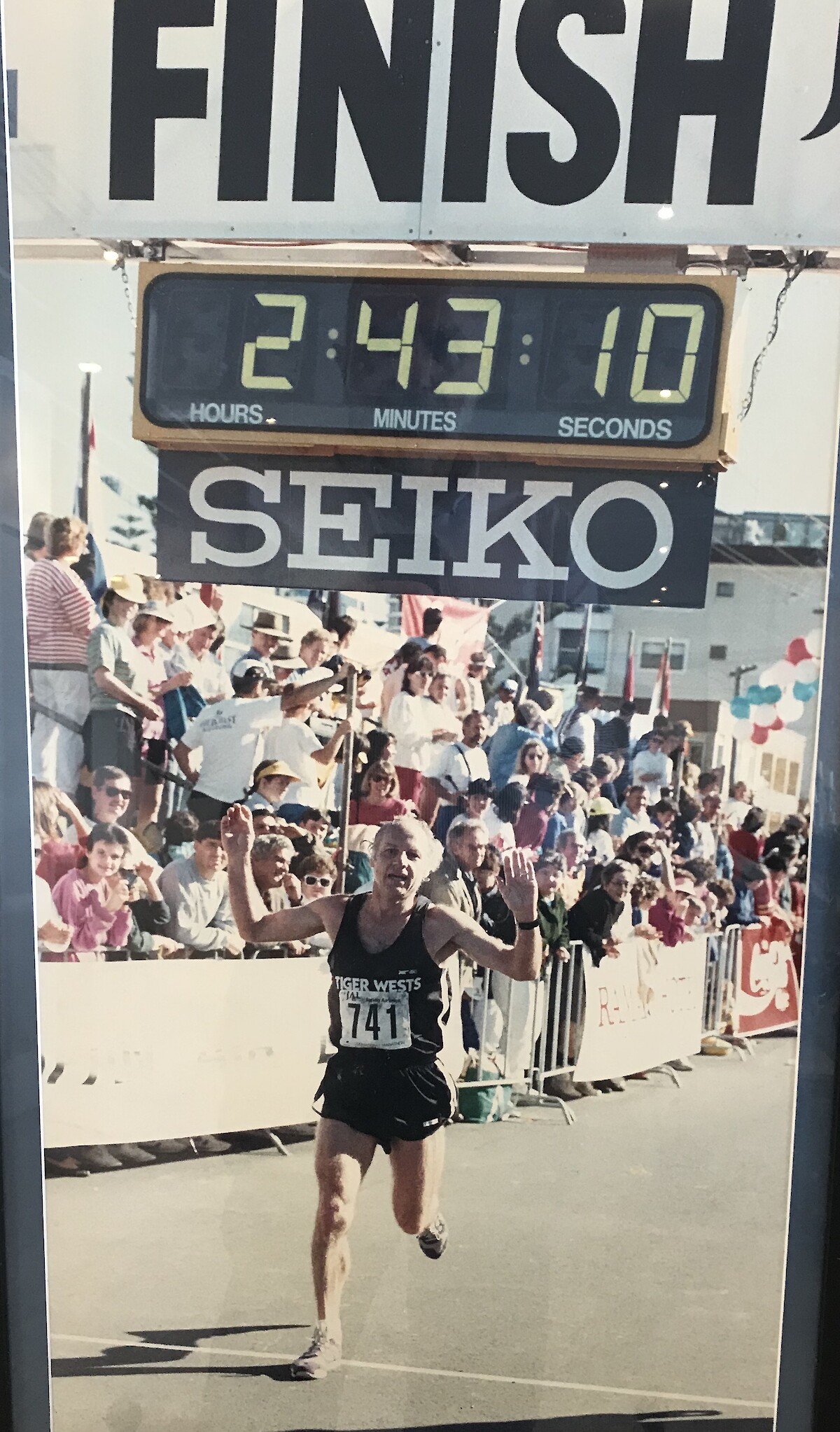Tony Larkum's 80th Birthday Party
Bill Dennison ·
On a quick trip to Sydney I reached out to Tony Larkum, one of my Australian mentors to see if we could get together. He responded quickly and invited me and my wife Judy to attend his eightieth birthday party at the Royal Motor Yacht Club, overlooking beautiful Rose Bay in Sydney Harbour. It was a very nice event which featured a fun speech by Tony's long term colleague Robert King (who co-edited a Marine Botany book that I assigned in my Marine Botany courses at the University of Queensland; Clayton and King, 1990), a heartfelt speech by Tony and a video from Europe with multiple renditions of "Happy Birthday" by Tony's son, daughter-in-law and granddaughters playing in a string quartet.

I first met Tony in 1984 when Doug Capone and I went to visit him in his University of Sydney office when we were on an extended trip to Australia, where we were based at the Australian Institute of Marine Science (AIMS). Tony was very gracious and invited me to join his research team at One Tree Island after I finished my stint at AIMS. I jumped at the opportunity and went there with Tony, Klaus Koop, Judi Hansen and Ron Johnstone. I was studying the effect of water motion on coral photosynthesis and calcification at AIMS with Dave Barnes (Dennison and Barnes, 1988) and I recall putting plaster Muus balls around on One Tree Island Reef. I enjoyed the people in Tony's lab, and I distinctly recall my goodbye dinner with Tony, his wife Hilary and several people from his lab on the evening before I was to fly back to Stony Brook. I had stayed in Australia much longer than originally intended because I was having such a great time. But rather than feeling excited about heading 'home' to New York, I actually felt as though I was leaving 'home'. It was at that moment that I realized that I would look for opportunities to return to Australia. Tony eventually helped make that happen when he wrote me a letter of recommendation for the job I took at the University of Queensland.

But before I returned to Australia, Tony and I connected in the U.S. I was living aboard my boat named Adohr in Bluepoint, Long Island and traveling to Woods Hole during the summers to continue researching seagrasses. Tony was attending the VII International Congress on Photosynthesis at Brown University in 1986. So we arranged via email to meet in Providence, Rhode Island, where I would sail from Bluepoint, pick him up and then we would travel to Woods Hole together. Tony had been taking his morning runs down to the Providence waterfront and he found a nightclub right at the mouth of the Providence River called the 'Hot Club' in which I could come alongside for him to jump aboard and then we could find a place to moor the Adohr together. In an era before mobile phones, we had to set a time and date for this meeting, and sure enough, as I pulled up to the 'Hot Club', there was Tony. The Photosynthesis Congress was ending so I joined Tony, his friend and colleague John Raven, and my friend from The University of Chicago, Dennis Keefe for dinner, beers and pool at a local bar. I remember the looks by the Providence locals watching John Raven in his Scottish kilt kneeling on the floor to line up his pool shots.
When we arrived in Woods Hole, Tony decided to run in the Falmouth Road Race. This 7 mi race was established to run from the iconic Captain Kidd bar in Woods Hole to the Brothers 4 bar in Falmouth Heights along a windy seaside road. I dropped Tony off in Woods Hole and then had to drive my boat to Falmouth to pick him up. I expected to beat Tony to the finish, but he was too fast for my boat. This is when I learned what a good runner Tony was. There was a photo of Tony at the eightieth party of him finishing a marathon in the 50+ age group in 2 hrs and 45 min.

Tony and I were co-authors on two of my personal favorite scientific papers. One was the synthesis paper from the ENCORE experiments at One Tree Reef (Koop et al., 2001). Klaus Koop, the first author of this paper, also attended the party which was a bonus. ENCORE stood for the Effect of Nutrients on Coral Reefs and was a multi-year, multi-investigator project. One Tree Reef had a series of 'micro-atolls' in which the reef water was ponded at low tide, forming shallow wading pools. We installed automated nutrient deployment devices in replicate 'micro-atolls' which delivered doses of nitrogen, or phosphorus or nitrogen + phosphorus. Including the controls, we had 12 experimental micro-atolls and teams of scientists studied various aspects of the coral community. We sampled for a year prior to the nutrient additions, and the first year of the nutrient addition experiments did not result in many impacts, so the dosage was increased and the experiments ran for another year. So we were traveling to One Tree regularly over many years and we often overlapped with Tony. One of my favorite Tony stories was when we left One Tree with Klaus after a week of research, and Tony came to the research station as we were leaving. All of the food had to be shipped in and was stored in plastic Nally bin containers. That night, Klaus was back in Sydney and he received an emergency phone call from Tony on One Tree. Tony was panicked that there was no tea to be found in the Nally bins. Klaus replied that he was sure that there was a full box of tea. After some back and forth, Klaus said that there was definitely a box of Earl Grey tea. Tony said "Earl Grey is NOT tea" and Klaus had to figure out a way to get some real English Breakfast tea to One Tree. I have never looked at Earl Grey tea the same way since then.
The other favorite paper that I collaborated with Tony on was a series of parallel experiments that we ran at University of Adelaide's Coobowie Marine Research Station on Gulf St. Vincent in South Australia (Longstaff et al., 2002). Tony Cheshire had a research team who used large respirometers built at AIMS, and Tony and I had been collaborating with Rolf Gademann from Germany on an underwater Pulse Amplitude Modulated (PAM) fluorometer. We decided to compare the two measurement systems in situ. Tony convinced John Raven, the Providence pool shark, to come along and I brought my friend Todd Kana who was doing his sabbatical at the University of Queensland and my student Ben Longstaff. Tony and John had traveled to the Barossa valley to select the excellent red wines that we would have with our dinners. Ben and I dove in the chilly water to take measurements and we would download the data in the evening, after which John would give an impromptu lecture on photosynthesis to explain our results every night as we drank great wine. It was an amazing experience. When I run across either of these papers with Tony, I smile internally because of the great memories they invoke.
Another bonus of this birthday party was seeing my Australia Coral Reef Society colleague Pat Hutchings. Pat and I helped organize several ACRS conferences in iconic locations on the Great Barrier Reef and she was also involved in the ENCORE experiment. Peter Ralph, a seagrass colleague from the University of Technology Sydney, was also there and Peter is still collaborating with Tony.
Tony has been inspiring me throughout my career, and seeing him at age eighty in great shape surrounded by so many great friends and colleagues, still active and still publishing, continues to inspire me.

References
Clayton, MN and RJ King (eds.) 1990. Biology of marine plants. Longman Cheshire, Melbourne, Australia. 501 pp.
Dennison, WC and DJ Barnes. 1988. Effect of water motion on coral photosynthesis and calcification. J. Exper. Marine Biol. Ecol. 115: 67-77.
Koop, K, D Booth, A Broadbent, J Brodie, D Bucher, D Capone, J Coll, W Dennison, M Erdmann, P Harrison, O Hoegh-Goldberg, P Hutchings, GB Jones, AWD Larkum, J O'Neil, A Steven, E Tenton, S Ward, J Williamson, D Yellowlees. 2001. ENCORE: The effect of nutrient enrichment on coral reefs. Synthesis or results and conclusions. Mar. Poll. Bull. 42: 91-120.
Longstaff, BJ, T Kildea, JW Rundie, A Cheshire, WC Dennison, C Hurd, T Kana, JA Raven, AWD Larkum. 2002. An in situ study of photosynthetic oxygen exchange and electron transport rate in the marine macroalga Ulva lactuca (Chlorophyta). Photosyn Res. 74: 281-293.
About the author
Bill Dennison

Dr. Bill Dennison is a Professor of Marine Science and Vice President for Science Application at the University of Maryland Center for Environmental Science.

